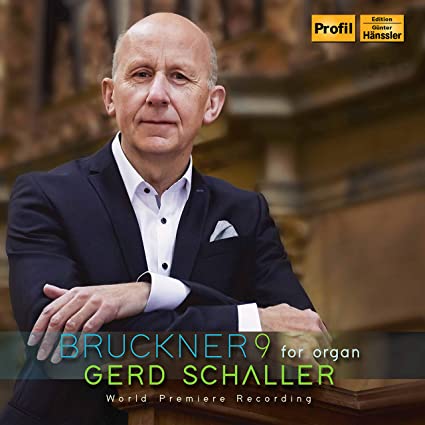
ESSENTIAL RECORDINGS

Most of the booklet notes for this recording are a transcript of an interview in which the interviewer basically questions the need or impulse behind the decision to undertake the gargantuan amount of work involved in the transcription for pipe organ of a symphonic score. And conductor and organist Gerd Schaller's pragmatic reply was: "The reason for this transcription was simply that - once again - I had been busy with the Ninth, this time with the intention of arriving at the essence of the work: I wanted to understand Bruckner even better, come to grips with the architecture of his symphonic thought. And that led automatically to the idea of making an arrangement for a keyboard instrument, because when you tackle that, you are practically compelled to limit yourself to the essence of a work." The simple fact that Anton Bruckner (1824-1896) was a lifelong organist and even composed like an organist, in a sustenuto, hymnic, recursive style characterized by long fluid lines and sustained chords, it makes perfect sense to arrange his symphonic output for the pipe organ. In fact I'm positive he would have worked out most of his symphonic ideas and drafts on the organ itself (you can't quite get the same harmonic correlation or interconnection on a piano). It's not the first time this has been done since other musicians have arranged, and recorded, some of Bruckner's symphonies for the organ.
What distinguishes this one from the rest and makes it a world premiere recording is the fact that the inclusion and completion of a planned fourth movement is by Gerd Schaller himself. This conductor has already recorded and released the orchestral versions of Bruckner's Ninth more than once, including his own completion as well as one by William Carragan. Because Bruckner left behind many drafts and sketches is a clear indication that he had planned his Ninth Symphony to be framed within four movements. And that would compel anyone deeply entrenched within the music of Bruckner to attempt a completion based on these sketches and drafts. Now as everyone is well aware, Anton Bruckner was known to revise to the point of revising revisions, so the final outcome may have been different but no one will ever know for sure. To me this additional movement certainly sounds like Bruckner, what with its recursive episodes and alternating motifs. And a nice touch is the return of the symphony's opening pages within the final two minutes, but overall it feels outpowered and unbalanced when compared to the colossal first movement. But this completion as a whole is sure to please any Bruckner devotee.
The instrument used in this recording is the Eisenbarth organ of the former Cistercian Abbey Church of Ebrach. Originally built in 1743 with 32 stops by Johann Philipp Seuffert, it was augmented in 1902 by the firm of G.F. Steinmeyer & Co., and finally rebuilt in 1984 by the organ workshop of Wolfgang Eisenbarth into a four manual 56 stop instrument. The advantage of hearing the orchestral music of Bruckner on a pipe organ, and what this superb interpretation and recording emphasize, is the skeletal harmonic clarity of it all. Without the extra pounds that a full orchestration adds to the music, all of the subtle dynamic changes and harmonic intervals are laid bare, as you can hear in the short audio clip below of the final two minutes of the opening movement.
Jean-Yves Duperron - March 2021